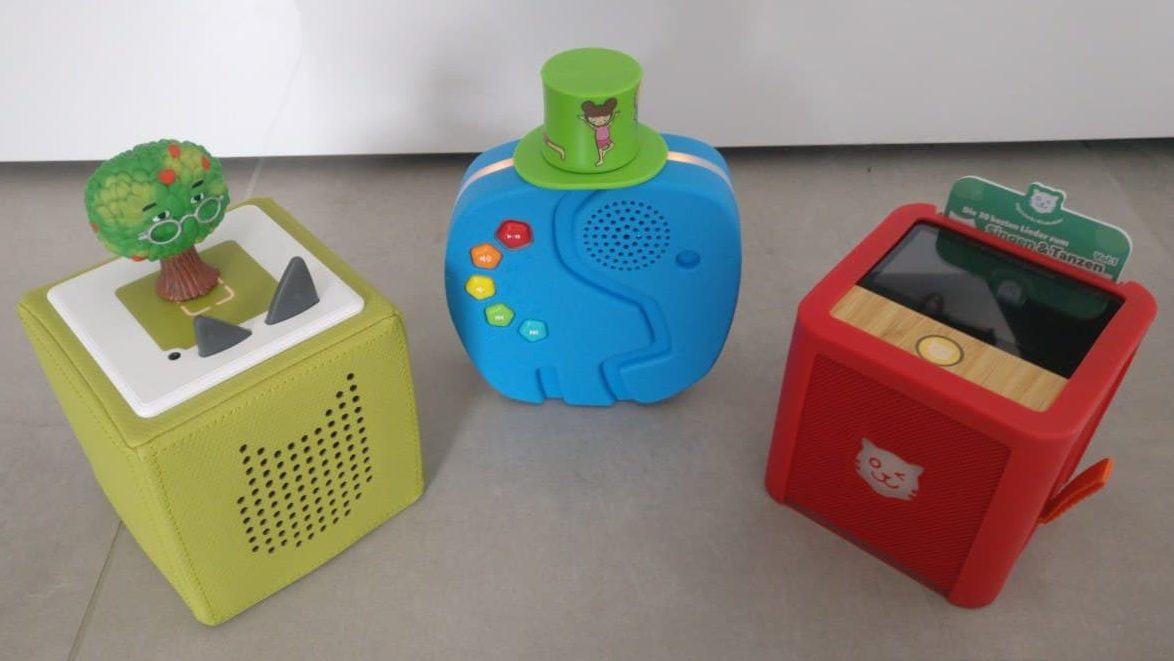
This article will take an actual view into the Children’s Audio Player market by giving a quick view onto the Toniebox by Boxine, the TigerBox Touch by TigerMedia, the Kekz Headset by Kekz-Media and the Technifant by TechniSat.
The market for Children Audio Player, which once was occupied by the good old cassette player and later by some versions with a cd-drive build in, was left unattended for quite a while.
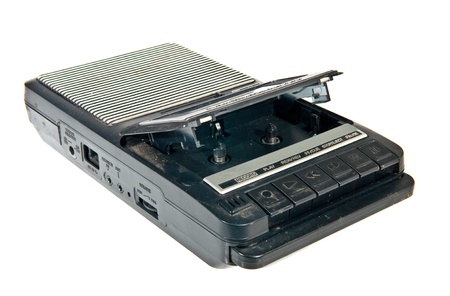
an old cassette player 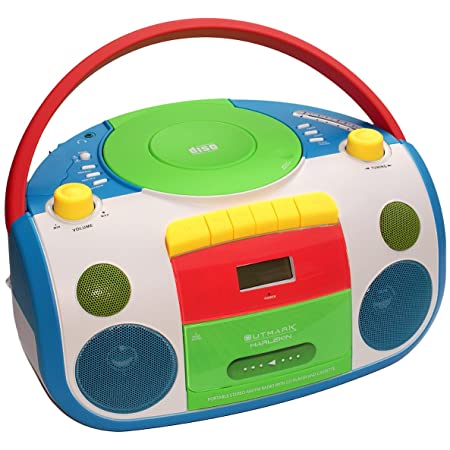
harlequin colored cd and cassette player
No innovation was done around audio products for this age group bedsides of pathetic attempts to establish any kind of SD-card players like the original TigerBox. They just exchanged the way how the audio was stored and replaced the cassette or cd-drive with an SD-card slot. By doing so they forgot about how the music industries is handling the audio files and went their own way.
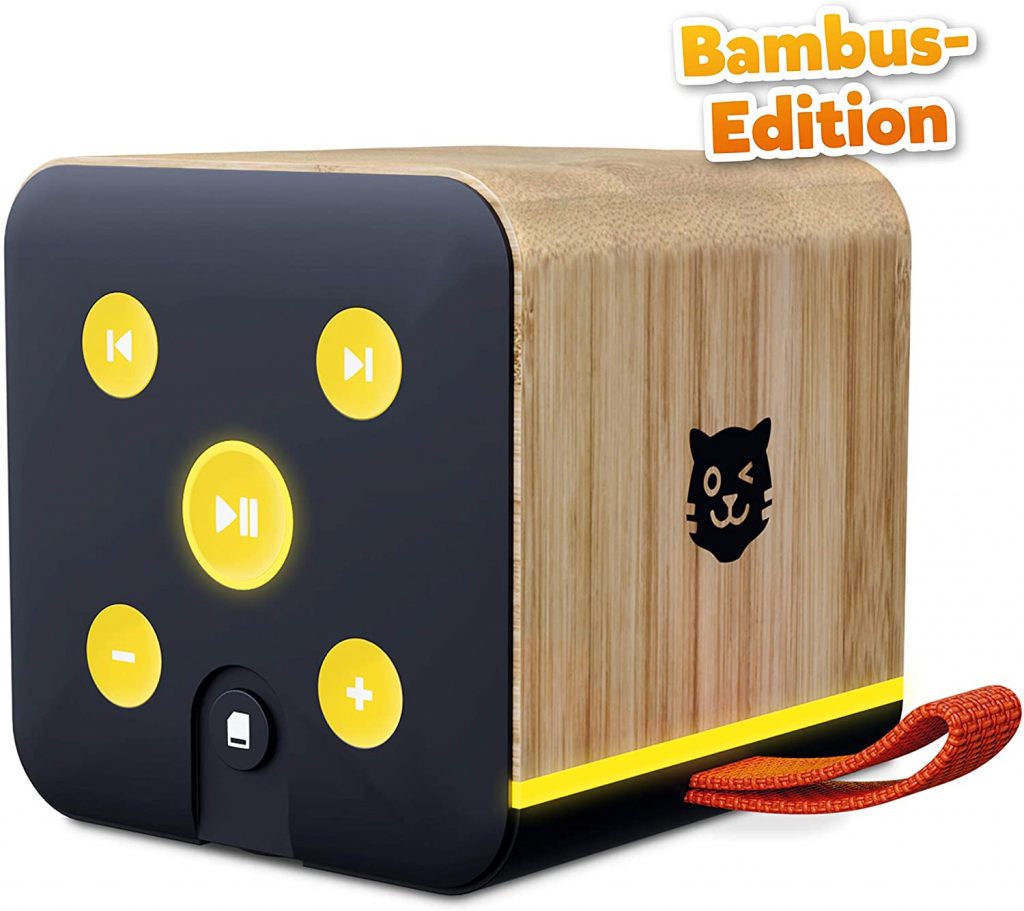
Some players like the Hörbert did not do as bad as others. They spent some thoughts about how kids can get an easier access to different audio files. Therefor they added a bunch of colorful buttons to establish direct access to different playlists which are just different directories on the SD card where the mp3 files are stored. This makes the Hörbert better than the 1st gen TigerBox but still there is the gap and effort how the music gets to the SD card. To be fair, Hörbert was introduced in 2011. Back than they did an extraordinary job material and quality wise. But in comparison to actual audio players the Hörbert is missing some modern features. The only development that they came up with was a Bluetooth update which cost additional ~60€ to the base price of ~240€.

While the music industries had to move with the development to downloadable music away from the tapes and cds, which could be bought by parents and directly inserted into the children’s players of their favor, parents had to bridge the gap to get the online stored music onto an sd-card to still be able to let the kids listen to music. This bridging process brought a lot of problems along the way and let some users to do even some illegal steps to get their hands onto some digital audio files. In earlier days most of the online bought audio was DRM protected. This audio could not be used on any of the sd-card audio players. Therefore the parents had to either remove the DRM, or go directly the way of sharing mp3 files through other channels (where some might be even today illegal and some are covered at least in Germany by the “Privatkopie” passage within the copyright law.) Another way used to be ripping of old CDs or even cassettes. Most of the steps that needed to be done included some work with computers to achive the goal of getting audio files onto an sd-card.
This gap needed to be covered by parents until company Boxine came up with their attempt to fill this gap with a combined solution of audio player with playable figurines as the medium for transporting the audio and controlling the player integrated with an automated process of getting the audio files over wifi directly into the audio player. This whole process is designed so easy that even little toddlers could perform it.
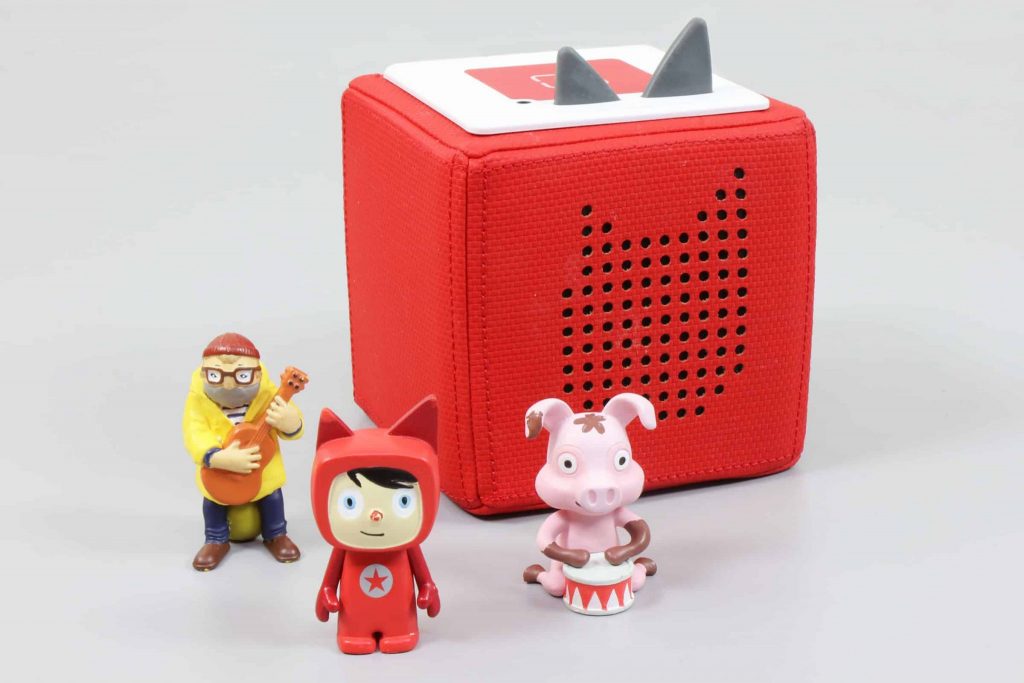
Since 2016 when Boxine introduced their Toniebox and rolled up the marked other companies tried to jump into the children’s rooms. Products like TigerBox Touch, Jooki, Kekz headset, the Technifant and some more are trying to get their piece of the cake. Although all of the mentioned copycats are using some kind of Token to cover the operating concept and the way how the audio gets transported to the player, they are all lacking the play factor that is given with the Tonie figurines. Boxine was not only able to get a lot of love by the kids but also managed to awaken collectors ambition by some parents to get their hands on all Tonie figurines (the rare ones can reach prices of 120€ or higher on ebay).

Out of economical point of view Boxine did a great job by generating a sales network where POS are established with a large drug store company Müller, book store company Thalia and some toy stores. The placement of POS are thoughtful chosen so that there is not too much competition between each seller going on.
TigerMedia is going strong by broadcasting TV commercials and lot of ads in social media to promote their TigerBox Touch and strengthen their position within the market. They have established POS with major electronic shops like EP, MediaMarkt, Saturn and toy stores as well.
But when it comes to the point where grandparents are looking for a present that they can bring along for their grandchildren at their next visit, they might be more attracted by the Tonie figurines instead of a colorful plastic card or other NFC Token like the TigerCard, Kekz Chips or plastic hats for he TECHNIFANT. It is the additional usage of a playable figurine that influences their decision besides of the high quality and haptic of the figurines that reminds them of the Schleich figurines that their children played with in earlier times. (BTW: The production and development of the Tonie figurines is done by the same production facilities and design office that is responsible for the Schleich figurines as well.)
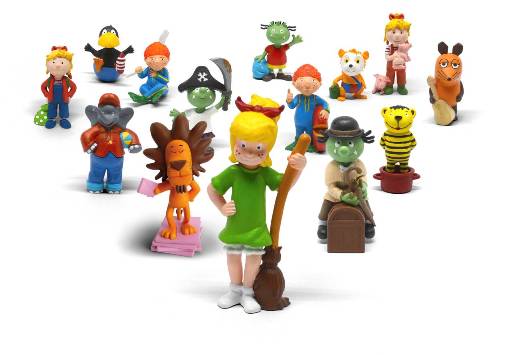
Tonie figurines 
TigerCards for the TigerBox TOUCH
But is everything done better by Boxine?
Well, …
… marketing wise? YES!
… concept of using and handling the player? YES!
… product design? YES!
… hardware options and feature related? NO!
Boxine sticks to their lean concept of the Toniebox for quite some time. In 2020 they rolled out into the US market with the same Hardware they introduced 2016 when they started to sell in Germany (besides of some minor hardware revisions). They added some cloud feature where more episodes of the favorite audio plays can be added into an existing figurine, but this includes always the usage of their smartphone app or a web browser. The Hardware they use is based on a small Microprocessor with WLAN integration some audio processing and a mono speaker. For the internal memory a sd-card is glued to the PCB (that is not intended to be handled by the user). The product design of the Toniebox is well thought through. They did not just think about the external appearance but spent a lot of grease into the production steps of the box. I have never seen a cleaner hardware design than this box that is basically locked by just one screw. The PCB design can be taken as a reference model of its class.
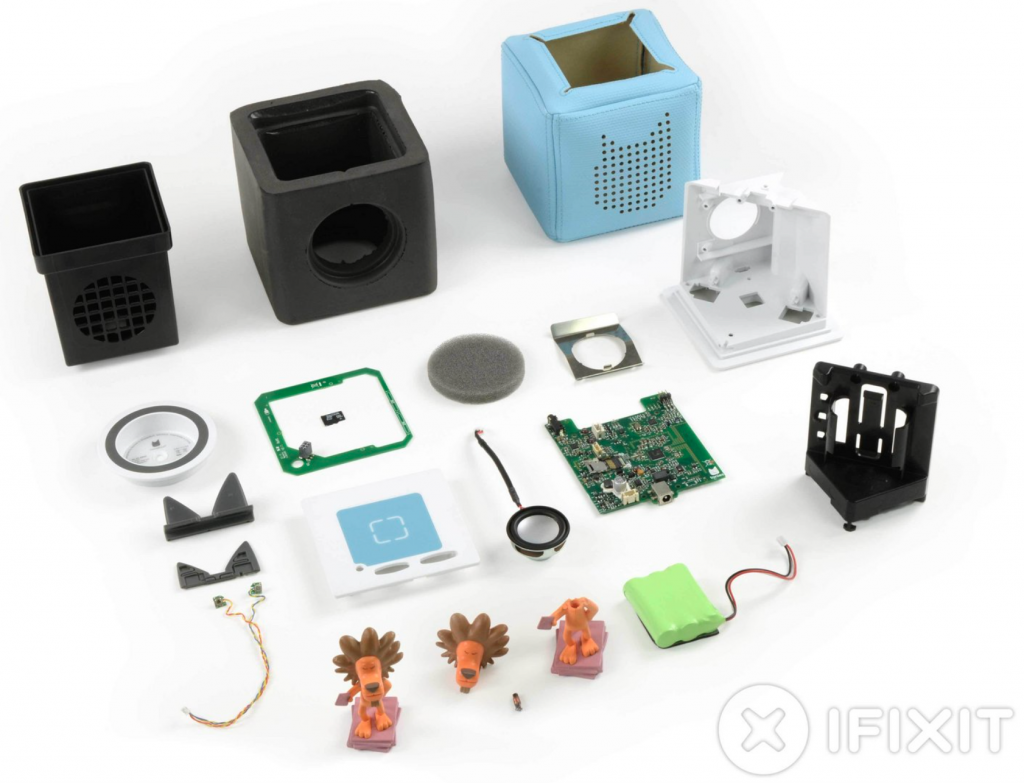
TigerMedia introduced a subscription model for music and audio books which supplies a lot of content for a monthly fee in addition to their TigerCards that can be bought for certain audio content as well. The content of the single sold audio content is not part of the streaming Mediathek so that the user has to pay for both. The operating concept is by far more complicated as known from the Toniebox. To offer the mentioned features, TigerMedia developed an Audioplayer based on an Android System with an integrated touchscreen. While this can be handled by the older ones, they complain about how many steps they have to take within the menu structure to play their favorite tunes. The hardware itself looks nice from the outside, but as soon as you try to open up a box for repair you can immediately tell the difference within the development effort compared to the Toniebox. Where Boxine managed to get all parts onto a single PCB, TigerMedia used several smaler single PCBs connect by directly soldered wires too short to do a proper repair. The housing itself is partly glued and can not be completely disassembled without using some force and a soldering iron.
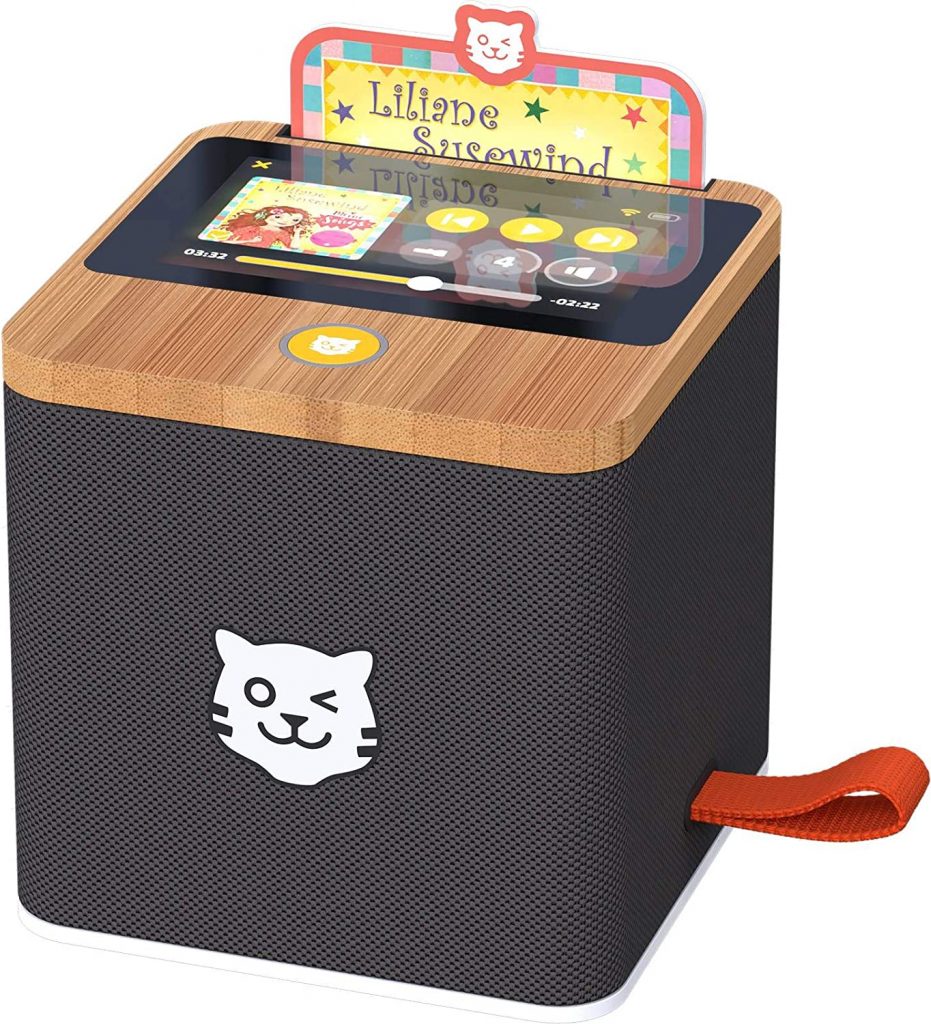
Jookis concept might seem like a simple copy of Boxines Toniebox, where they sell small plastic figurines that can be placed onto the box to play certain tunes. But they have one killer feature all the other players are lacking. They can connect to streaming services like Spotify or Deezer. Most of the households do have some kind of music streaming subscription in use where they already pay for. And if it is the service from Spotify or Deezer, you can link the figurine, or a rainbow tag (Jooki 2nd generation) to content of these services. This enables the use of a variety of media content with the ease control of just placing an object onto the player.
I can not tell much about the used hardware. Neither was I able to buy one nor was one provided to me by them to test it. This might be the downside of this player. The market share is not really given, because there are no outlets that sell this audio player. The Amazon product side and the own shop system on their company site just state that the product is sold out.
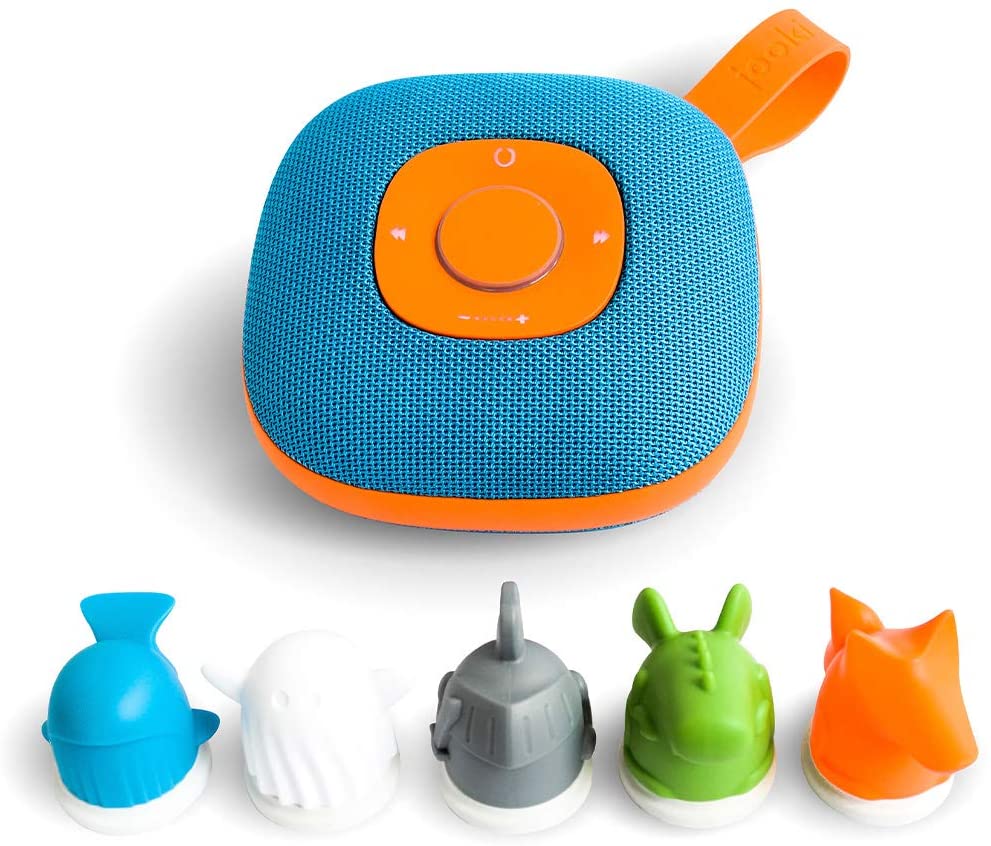
Jooki 1st gen 
Jooki 2nd gen
Kekzmedia is going with their Kekz Headset a slightly different way. They implement the player within a headset for children. That makes this product by far the most portable player of all. The other mentioned players are battery powered as well and they all have the feature of a headphone jack installed but an additional wired headset is needed for this. Although the TigerBox and the Technifant do have Bluetooth hardware installed, they did not enable this in their actual firmware (although I am not sure about the TECHNIFANT).
The audio is preinstalled and stored within the Kekz player internally and can be enabled by colorful round tokens called Chips. Because this player is in beta testing right now and I was not able to get into the beta program I can not tell much about the product itself. As far as I can tell by the information given on their web page no WLAN is installed within the headset. It is not explained whether new or own audio can be added to the player.
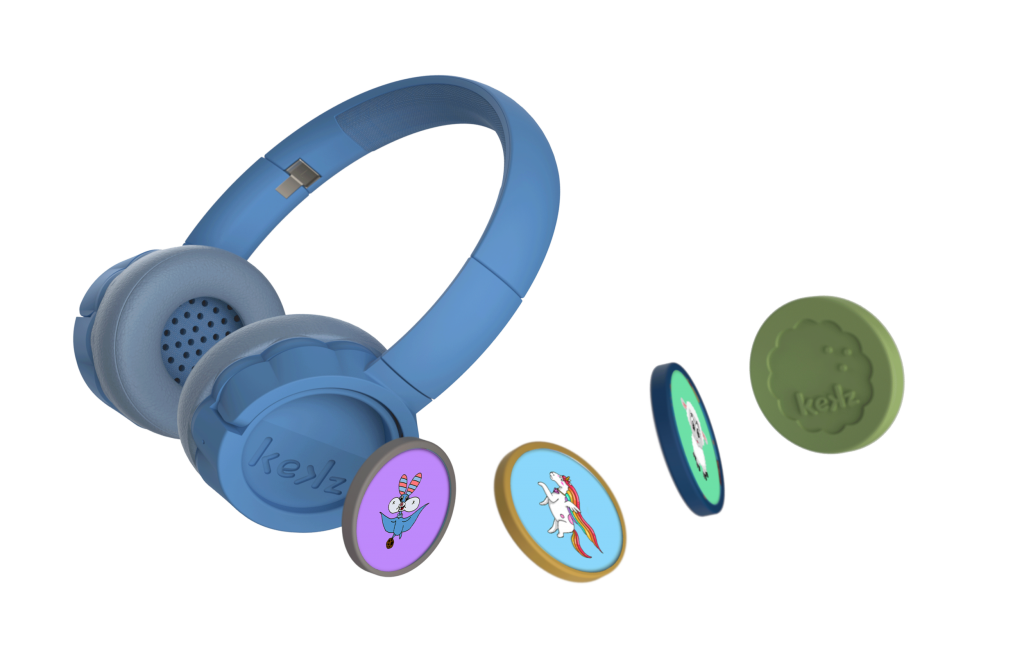
The Technifant by TechniSat is the newest member in this group of products. It looks like TechniSat wants to place their product in the same spot where Boxine and TigerMedia are playing. They developed a battery powered player in an Elefant shaped design. In addition they included some LEDs that let the Box glow. The difference is how the audio is brought to the box. Where the other boxes are downloading their content over WLAN from the Internet and store the data within the player, TechniSat is introducing a hat shaped audio container. The plastic hat has a proprietary connector that lets the hat sit ontop of the Technifant secured by a magnet. It is to assume that the connection is based on the USB standard and an USB storage is included inside the hat. The process of managing and loading the audio content onto the hat seems like a step back to earlier attempts of introducing audio players for children like mentioned at the beginning of my post. Therefore the hat needs to be connected to a special USB cable that lets the user copy audio content downloaded from the TechniSat Homepage. In addition own mp3 files can be used as well. The content provided by TechniSat is encoded and can only be used with the registered hat. With this procedure of handling the audio content a computer is mandatory. But more and more households just use iPads or similar as a replacement for computers which leaves them unable to bring new audio to this device.
As of now I was not able to get my hands on a Technifant and can not tell how the product feels quality wise nor how the actual usability is given.
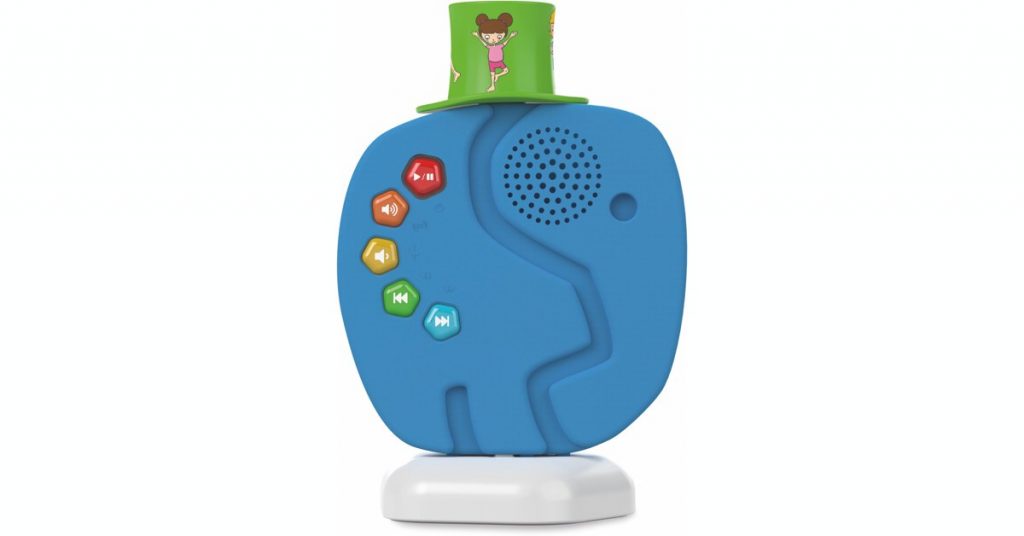
What is the conclusion?
Boxine is still by far the most versatile children’s audio player on the market. The quality you can feel just by touching it and the ease how the kids are using it makes the handling of the product outstanding. The TigerBox fulfills the higher product quality standard within their design and material mix as well, but lack with the play and fun factor the Tonie figurines bring along. The screen is definitely a nice feature to see album artwork, but this brings always a complexity within controlling the player. Boxine and Kekz are advertising their screenless product and that they are focusing on the usability which I have to admit is better given without a screen. But for a subscription model from TigerBox where the kids can operate the player without tokens just by browsing through the library a screen is mandatory.
Although I can not tell the most about the Jooki player, just because I have never seen one, it includes a killer feature all the others do not offer. It is the connection to streaming services like Spotify and Deezer which includes radio stations as well. This could be the feature to get a part of Boxines cake only if Jooki would be able to get this bigger into the market.
The Kekz and Technifant player states more of an island system where new audio content is hard or even not to come by.
In addition to the support of streaming services I would like to see a Bluetooth integration not just for headphones, but for larger speakers as well. This would enable a transformation from a stand alone kids toy to a player that can be used after the childy phase to physically control the music without the use of a smartphone or tablet. I could imagine that a mature version of these players could even be used in a living room environment where elderly people can use music / audio / radio of streaming services without the hassle of using newer technology like smartphones or tablets that they are not used to which often discourages the older generation. Just by having different NFC Tags or Music Cards they could start their favorite tunes and radio stations.
If you have any thoughts about my opinion, please do not hesitate to leave some text in the comments.
If you are a manufacturer of these or other audio players and like me to take a look at your product and like to include it within my writings, please get in touch with me at gambrius@gmail.com.


Cool thing.
But why did you mention hörbert only in the tags?
Hallo Joachim,
you are right. I had the plan of mentioning the Hörbert within the article, but while I was writing I just missed this. Did just a quick update of my article to give a brief view onto the Hörbert as well. Out of my point of view they are not really bad, but do not include any modern feature. To be fair the Hörbert is introduced in 2011 and was one of the first available kids mp3 players that stood out. Quality / Material wise and price wise. It is still quite expensive with ~300€ for a audio player.